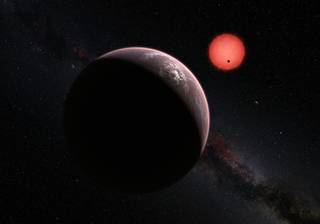By Angelica Coleman
Staff Writer
Last Wednesday, Feb. 22, NASA published an article in Nature magazine revealing their discovery of a nearby planet system. This system consists of seven Earth-size planets, three of which exist within the habitable zone of their star, meaning that the presence of liquid water is more likely there. This discovery has sparked more discussion about the potential of habitable planets and extra-terrestrial life forms.

The system of exoplanets, or planets outside of our solar system, was named TRAPPIST-1, after a contributing telescope in Chile. They are located about 40 light years away from Earth, and the planets themselves are relatively close together.
This system is the first of its kind to be discovered, with so many Earth-size planets orbiting an ultra-cool dwarf star. The Spitzer Space Telescope has been useful in observing the TRAPPIST-1 star, as it uses infrared technology and the star’s light emission occurs heavily in that wavelength range.
The contributing researchers have been able to make remarkable observations about the planets solely from telescope data. For instance, they believe the TRAPPIST-1 planets are tidal to their star, meaning they do not turn on an axis like Earth does. Also, the scientists have been able to measure the planets’ sizes and estimate their masses and densities. They also have concluded that the planets are most likely rocky, with the seventh planet showing characteristics of an icy composition.
Moving forward, NASA’s Hubble Space Telescope will be assessing the atmospheric conditions of some of the planets in an effort to make more conclusions about their gas composition. This examination is important in making more assumptions about potential habitation, because certain atmospheric compositions would determine the potential for existence of carbon-based life, or life as we know it here on Earth.
This exoplanet system will play an important role over the next few years in developing our knowledge about potential life in other parts of the universe. Even if no evidence of life is found in TRAPPIST-1, many biological questions can be addressed in observing those planets.
“Answering the question ‘are we alone’ is a top science priority, and finding so many planets like these for the first time in the habitable zone is a remarkable step forward toward that goal,” said Thomas Zurbuchen, associate administrator of NASA’s Science Mission Directorate.
NASA is clearly capitalizing on public interest in Earth-like planet discovery, as they published a fun “travel” poster imagining what it would look like to visit a planet in the TRAPPIST-1 system. With the international community excited and interested in this discovery, the future of NASA’s research endeavors regarding TRAPPIST-1 is looking star bright.

























